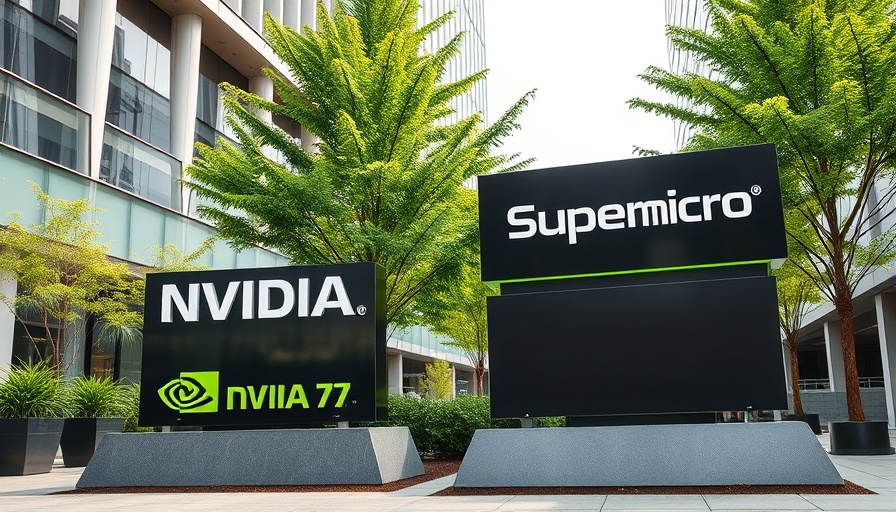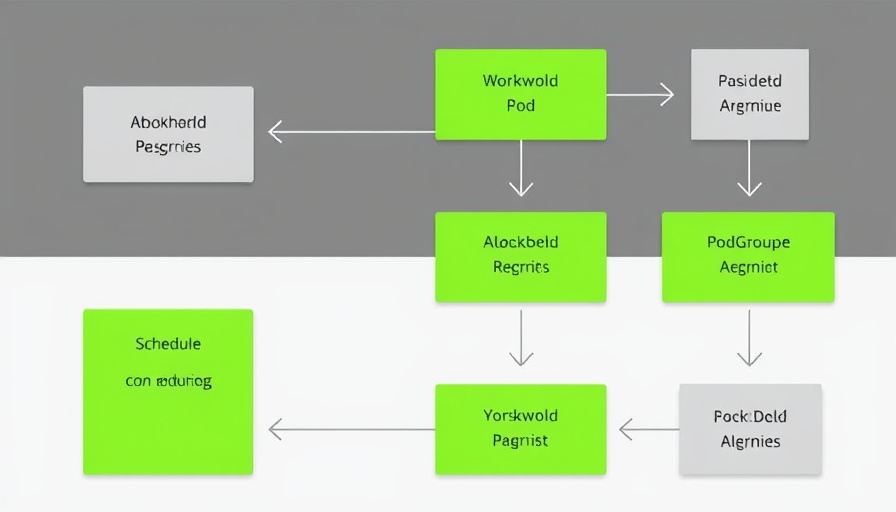
The AI Boom: A Growing Market with Limitless Potential
Artificial intelligence (AI) is not simply a buzzword; it represents a technological revolution that's making waves across multiple sectors. With the AI market projected to balloon from $174.3 billion in 2023 to an astonishing $2.09 trillion by 2033—indicating a compound annual growth rate (CAGR) of approximately 30%—the question becomes: Which companies are poised to ride this wave?
Nvidia: A Giant in AI Chip Manufacturing
Nvidia stands at the forefront of this booming industry, cementing itself as a leader in the semiconductor space. Recently, the company's stock has enjoyed remarkable success, reaching a market cap of around $3.05 trillion, positioning it just behind Apple. As the architect behind high-performance chips catered to AI applications, Nvidia has capitalized on its early innovations in graphics processing units (GPUs) to dominate approximately 80% of the AI-capable semiconductor market.
Nvidia's fiscal fourth-quarter reports reveal its soaring success, showing a revenue of $39.3 billion, marking a massive year-over-year increase of 78%. Furthermore, the data center segment—a core component of Nvidia’s portfolio—has been crucial to this growth, accounting for $35.6 billion of the revenue with a striking 93% increase from the previous year. Barclays analyst Tom O’Malley has an optimistic outlook, maintaining an Overweight rating with a price target of $175, suggesting there’s still significant growth potential. Despite some pushback from analysts regarding future expectations, Nvidia's ongoing product transitions highlight its solid market position.
Super Micro Computer: Caution Amidst Opportunity
Super Micro Computer is another player garnering attention in the AI sector, particularly as it specializes in high-performance computer solutions essential for data centers and AI applications. Historically a leader in its field, Super Micro has faced challenges, including an investigation by the U.S. Department of Justice regarding alleged accounting violations. However, recent developments show signs of stability as the company confirmed its compliance with NASDAQ regulations and continued profitability, reporting $5.68 billion in Q2 revenue.
Despite this positive turn, Barclays analyst George Wang has expressed caution regarding Super Micro’s prospects. Wang believes that while Super Micro holds a crucial position in the AI hardware market, its competitive advantage may be diminishing. According to him, market conditions and internal challenges could limit Super Micro's ability to achieve higher P/E multiples.
Understanding Investor Sentiment in AI Stocks
AI stocks, including Nvidia and Super Micro, have become focal points for investors, captivated by the potential of AI technology. However, as Barclays analysts suggest, it's essential for investors to weigh both companies' strengths and underlying pitfalls. Nvidia’s dominating trajectory positions it as a steadfast option for AI investments, while Super Micro’s recent compliance signifies stability but also reveals lingering concerns.
Investors need to remain well-informed and prepared to navigate the dynamic landscape of AI stocks. Considering diverse viewpoints, analysts recommend that investors stay abreast of innovations and emerging challenges within the sector. These insights could prove valuable as the tech landscape continues to evolve at an unprecedented pace.
Your Next Steps in the AI Investment Landscape
With rapidly evolving technologies and continuous advancements, being proactive is crucial in the world of AI investments. For those keen on capitalizing on the potential of AI stocks, engaging with expert analysis is vital. Whether you're drawn to Nvidia's expansive growth or intrigued by Super Micro's recovery strategies, understanding the nuances of each company is imperative.
Are you ready to delve deeper into the world of AI stocks? Explore analytics, stock predictions, and strategic insights to guide your investment decisions. In today’s fast-paced market, knowledge and prompt action can significantly influence outcomes.
 Add Row
Add Row  Add
Add 




 Add Row
Add Row  Add
Add 

Write A Comment